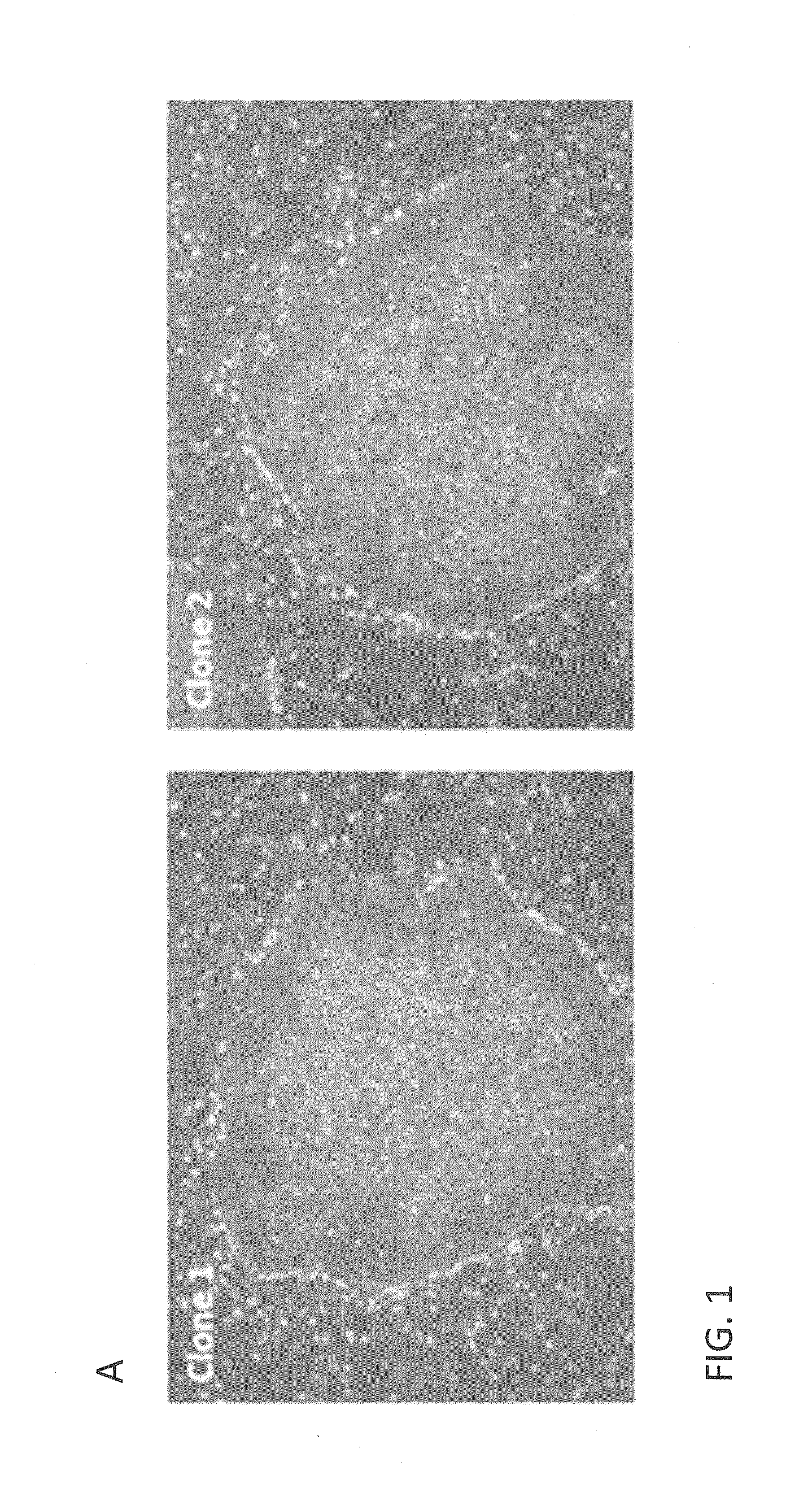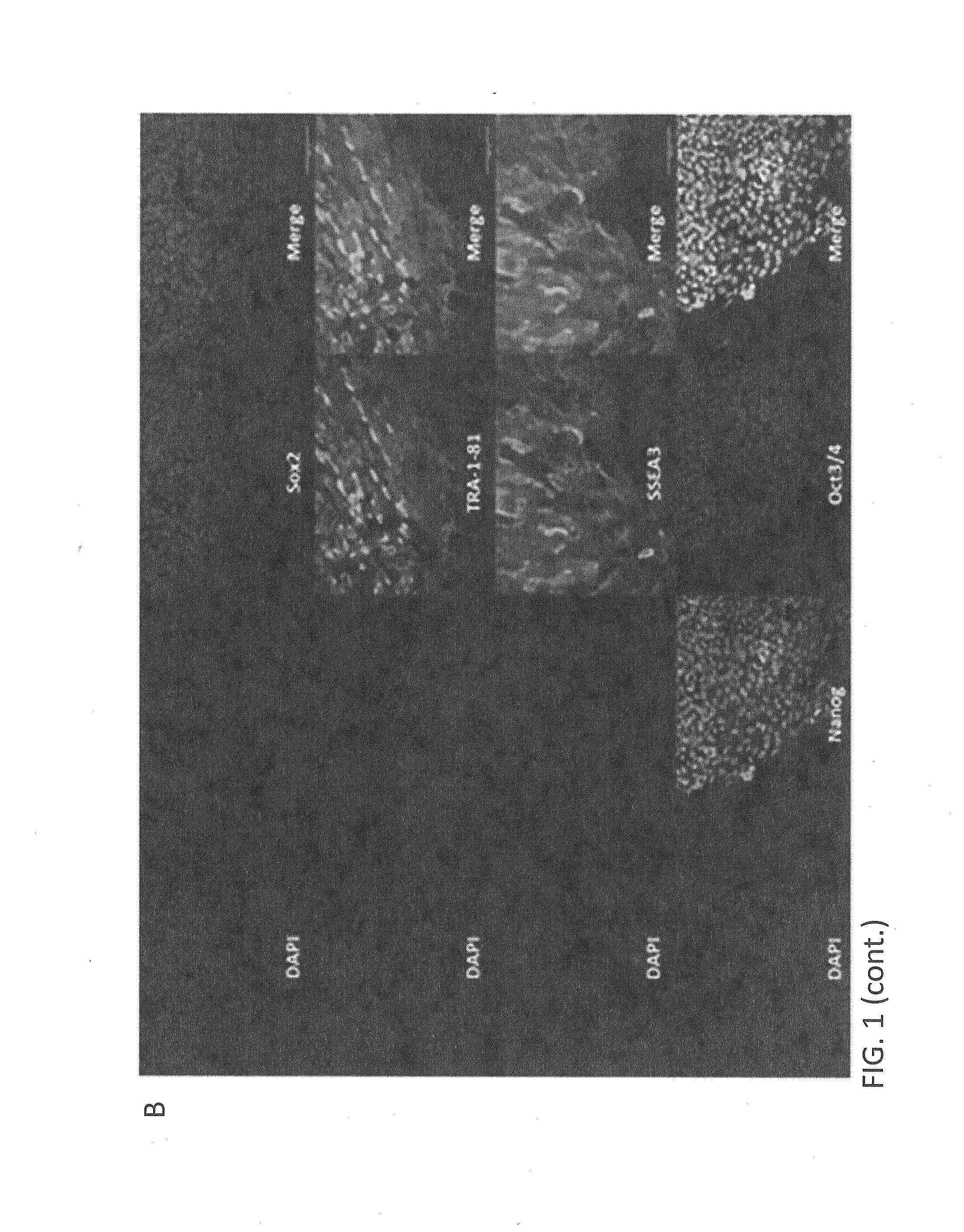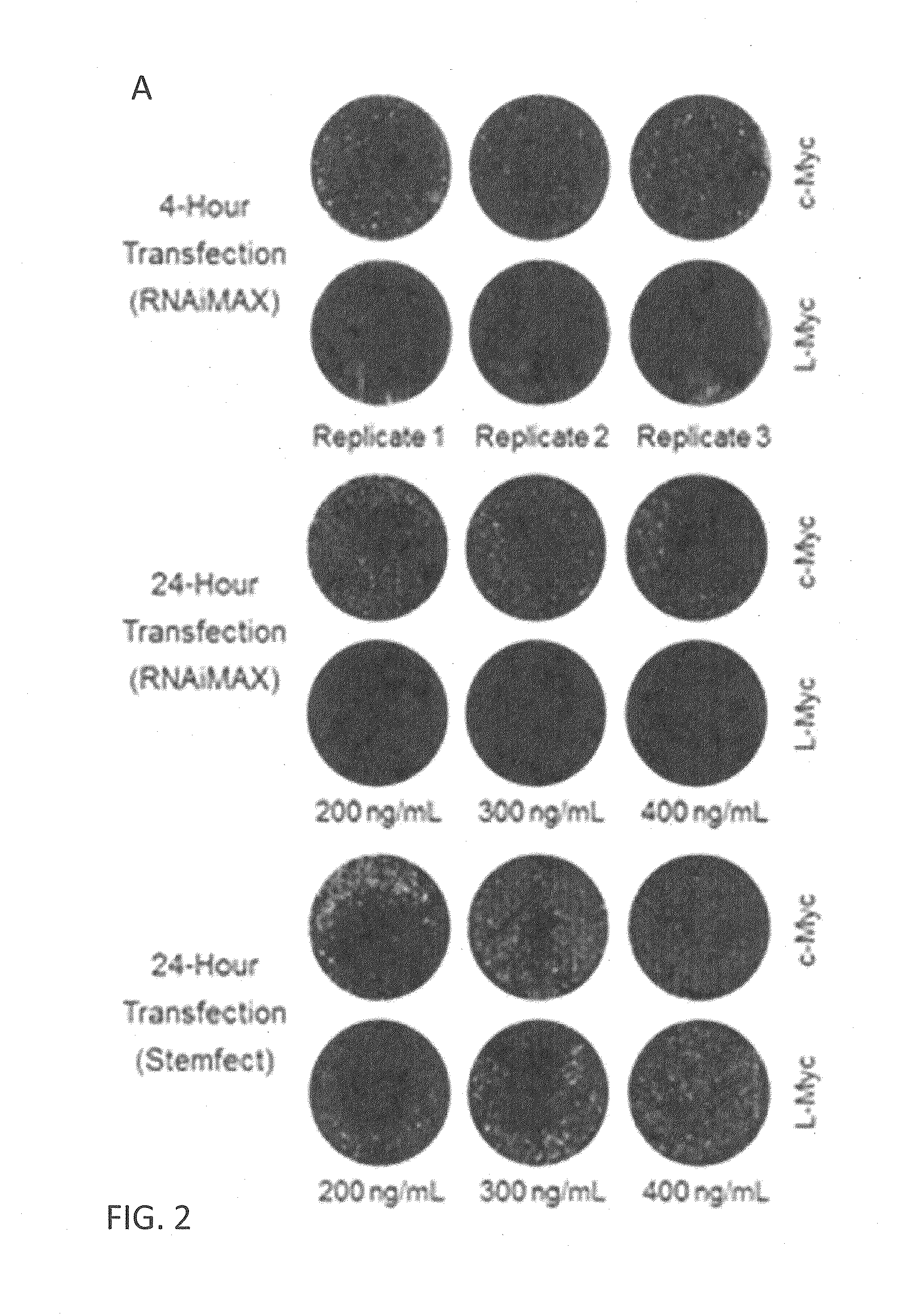Feeder-free derivation of human-induced pluripotent stem cells with synthetic messenger RNA
- Summary
- Abstract
- Description
- Claims
- Application Information
AI Technical Summary
Benefits of technology
Problems solved by technology
Method used
Image
Examples
example 1
Generation of IVT Templates
[0081]Plasmid constructs for generating linear PCR-product in vitro transcription (WT) templates were constructed using Ligation Independent Cloning (LIC). We first constructed a parental plasmid (pIVT) incorporating 5′ and 3′ untranslated regions (UTRs) flanking an insertion site designed to accept an open reading frame (ORF) insert encoding a protein of interest. The ORF-flanking sequences are as described in Warren et al, Cell Stem Cell, 2010, comprising a low secondary structure leader and strong Kozak site (5′ UTR) and the murine a-globin 3′ UTR. A linearized version of the PIVT vector bearing 5′ overhangs was produced by reannealing of two PCR products amplified from the plasmid using tailed primers. ORF PCR products with complementary overhangs were produced by an analogous procedure, pooled with the vector PCR products and transformed into DH5α bacteria by heat shock to clone gene-specific constructs (pIVT-KLF4, etc.). The resulting plasmids were u...
example 2
Production of mRNA Cocktails
[0082]The mRNA synthesis process is summarized in FIG. 5. Synthetic mRNA was generated in IVT reactions using a 4:1 ratio of ARCA cap analog to GTP to generate a high percentage of capped transcripts. Full substitution of 5m-CTP for CTP and Pseudo-UTP for UTP in the nucleotide triphosphate (NTP) mix was employed to reduce the immunogenicity of the RNA products. Cap analog and modified NTPs were purchased from Trilink Biotechnologies. A 2.5×NTP mix was prepared (ARCA:ATP:5m-CTP:GTP:Pseudo-UTP at 15:15:3.75:3.75:3.75 mM) to replace the standard NTPs provided with the MEGAscript T7 Kit (Ambion) used to perform IVT reactions. Each 40 uL IVT reaction comprised 16 uL NTP mix, 4 uL 10× T7 Buffer, 16 uL DNA template and 4 uL T7 enzyme. Reactions were incubated 4-6 hours at 37° C. and then treated with 2 uL TURBO DNase for a further 15 minutes at 37° C. before being purified on MEGAclear (Ambion) spin columns, the RNA products being eluted in a volume of 100 uL. T...
example 3
Cells and Culture Media
[0083]Cells targeted for reprogramming included BJ neonatal fibroblasts (ATCC), HDF-f fetal fibroblasts, HDF-n neonatal fibroblasts and HDF-a adult fibroblasts (ScienCell), and XFF xeno-free neonatal fibroblasts (Millipore). Expansion culture was carried out in BJ medium (DMEM+10% FBS), ScienCell Fibroblast Medium, and FibroGRO Xeno-Free Human Fibroblast Expansion Medium (Millipore) for the BJ, HDF and XFF cells respectively. Feeder cells used were 3001G irradiated neonatal human foreskin fibroblasts (GlobalStem) and FibroGRO mitomycin C-inactivated xeno-free human neonatal fibroblasts (Millipore). Cell passaging steps pertinent to xeno-free feeder-based and feeder-free reprogramming trials were performed using TrypLE Select (Gibco), an animal product-free cell dissociation reagent.
PUM
| Property | Measurement | Unit |
|---|---|---|
| Temperature | aaaaa | aaaaa |
| Temperature | aaaaa | aaaaa |
| Temperature | aaaaa | aaaaa |
Abstract
Description
Claims
Application Information
 Login to View More
Login to View More - R&D
- Intellectual Property
- Life Sciences
- Materials
- Tech Scout
- Unparalleled Data Quality
- Higher Quality Content
- 60% Fewer Hallucinations
Browse by: Latest US Patents, China's latest patents, Technical Efficacy Thesaurus, Application Domain, Technology Topic, Popular Technical Reports.
© 2025 PatSnap. All rights reserved.Legal|Privacy policy|Modern Slavery Act Transparency Statement|Sitemap|About US| Contact US: help@patsnap.com



